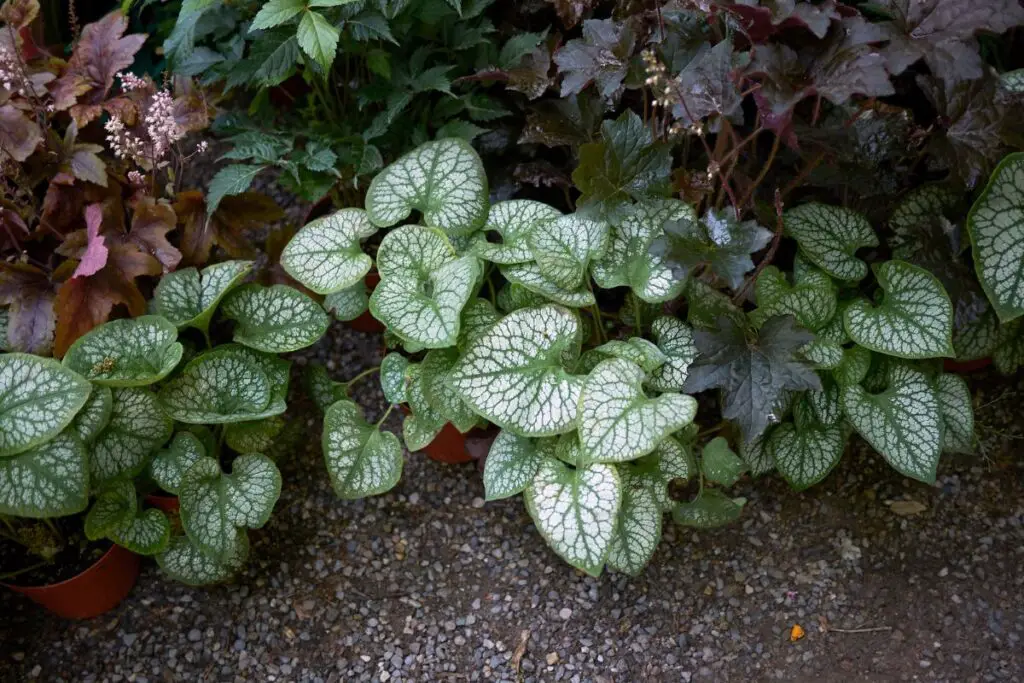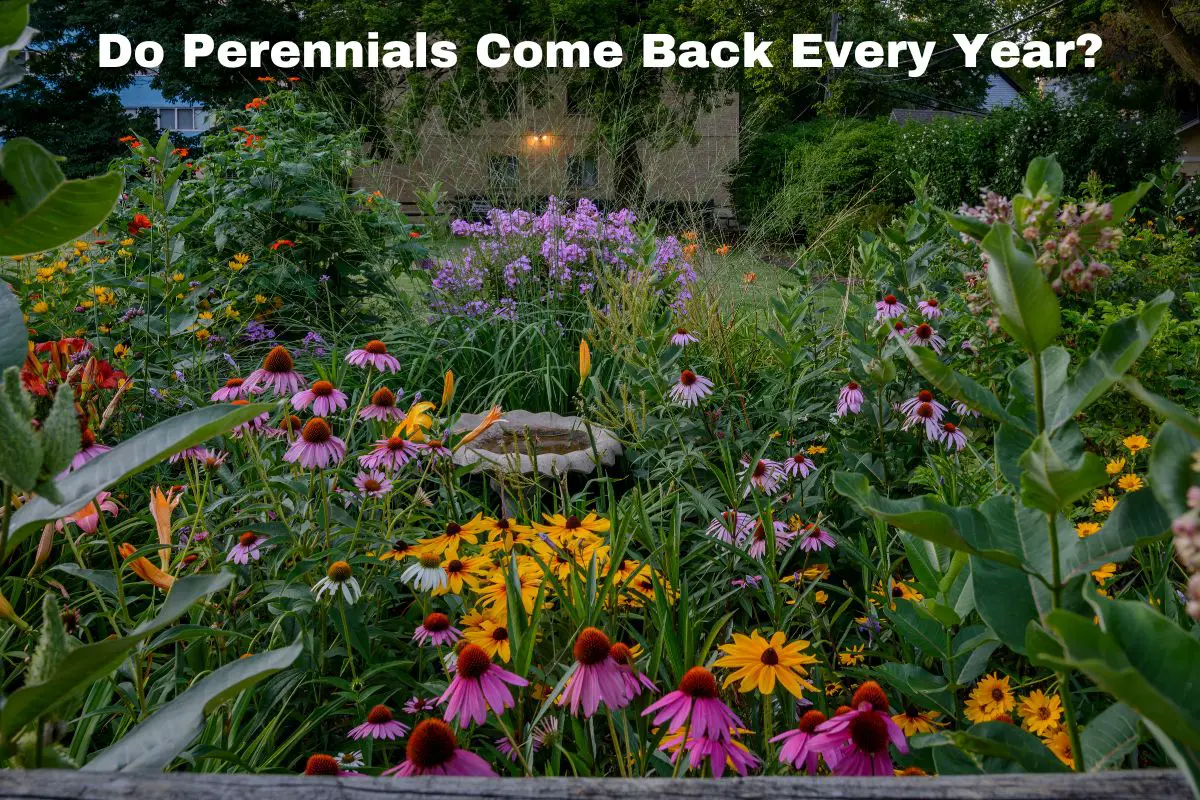A fixture of flower gardens, perennials are a good choice for many areas around your home. With some preparation and care, they will beautifully adorn your woodland garden, pathways, and wood-fenced areas.
Table of Contents
Do Perennials Come Back?
Perennials come back every year. Depending on the perennial and location, they can grow for 2-20 years. Careful planning will bring years of enjoyment from a perennial plant. Soil preparation and watering after planting are key to long-term growth. Add compost to the soil and be careful not to over-water.
Perennials are becoming very popular thanks to their availability at local nurseries and their always-expanding varieties. Choosing perennial plants with attractive foliage and beautiful blooms can help your garden stand out from the rest!

How Many Years Do Perennials Last?
Unlike annual and biennial plants, perennials come back for a variety of years depending on the plant. How long they last can also depend on the level of care imposed on the plant, the location where it is planted, and other factors.
Some plants need dividing to thrive, year after year. They do not need to be divided every year but will start showing signs of lost performance when the time comes.
See our article for Dividing Hellebore
Dividing some perennials can stimulate growth, rejuvenating the plant while preventing disease at the same time. Dividing is also used to control the size of the plant and/or increase the number of plants that you have to use.
Along with prolonging the lifespan of the plant, dividing the plant can increase the size, amount, and overall development of the blooms and improve the look of the foliage. Different plants need to be divided at different times of the year.
For instance, fall blooming perennials should be divided in the spring so they can expend their energy on root regeneration and growing new foliage. Likewise, fall is the best time to divide spring and summer blooming perennials.
Plant hardiness zone maps give you a good place to start but do not tell the full story. There are many other factors to consider within the specific climate conditions where you live.
How long perennials last in your garden and determining the best ones to use will depend on the type of soil, your growing zone, and light conditions.
Perennial Lifespan by Plant
Perennials can provide many years of enjoyment. Some can last a lifetime and some are better grown as annuals or biennials. Below is a chart for some common perennials and their potential lifespan and growing zones.
| Plant Name | # of Years | Growing Zone |
| Black-eyed Susan | 2-3 | 3-9 |
| Daylily | 3 | 3-10 |
| Liriope | 20 | 5-10 |
| Hosta | 30+ | 3-8 |
| Paenoia | 30+ | 3-8 |
| Wisteria | 50+ | 5-9 |
| Shasta Daisies | 2-3 | 5-8 |
| Chrysanthemums | 3-4 | 5-9 |
| Verbena | 1-3 | 7-11 |
Perennials That Survive Over Winter
Some perennials will survive the winter in your garden and some will need to be potted and placed in a cold-frame or brought indoors. Carnations are one such plant that is best not left in the garden over winter.
When temperatures start to drop and it’s reached a point in the fall where your perennials have stopped growing, this is a good time to help prepare them for winter. Giving them plenty of water before the ground freezes gives them a better chance to survive the cold weather.
However, you also should be careful not to overwater during this time as well.
Fall is also a good time to clean up the foliage that has experienced damage due to disease or pests. Be sure not to remove more than is necessary, however. Many perennials rely on the spent foliage to protect the crown of the plant, providing insulation over the winter months.
Adding an extra layer of mulch over your plants for winter may seem like a good idea, and often it is, but not always. Perennials can be damaged by allowing too much moisture near the base of the plant.
Try to keep mulch 2-3 inches from the base of the plant. When wanting to protect the plant over winter, using pine needles or branches of evergreens is a good practice, I personally prefer to use pine needles.
Want to learn more about winter perennials? Check out 28 Hardy Perennials

Returning Perennials in Raised Beds and Pots
Growing perennials in containers for cut flowers or patio gardens is another great use of these versatile plants. Container gardening, once reserved mostly for annuals, is finding popularity with perennials.
When growing perennials in containers we have a couple of suggestions that might be useful. First, choose pots that are big enough to let the root system grow without being bound up. Look for pots that are large and wide.
Secondly, do not use garden soil in your containers. Instead, use a potting mix that will allow proper drainage and airflow. The great thing about perennials in pots is that keeping them alive over the winter months is much easier when they’re mobile.
Growing perennials in containers can allow you to use plants that otherwise would not survive the microclimate in your area. You can keep these plants healthy and ready to come back next year with a little effort.
Several options exist to make this happen. One option is to store the plants in an unheated shed or garage. The standard fluorescent light fixture should give your plants enough light to survive in their dormant state.
Cold frames are another option. Cold frames are easy to build and, if you’re not up to building your own, you can order premade cold frames online. My cold frame consists of square bales of hay and some old windows.
If left outdoors you will need to monitor your plants carefully. Plants in pots and raised beds tend to dry out more quickly and freeze easier. They will also require more fertilizer due to runoff.
How To Keep Your Perennials Coming Back
Choosing plants for your hardiness zone is essential in making sure they come back, year after year. Planting your perennials in the spring and fall will make sure that they are well-established and healthy before harsh temperatures, whether hot or cold, these conditions can affect them adversely.
Finding out what conditions under which the plant will thrive is the most important factor when deciding what perennials you want to use in your garden or when landscaping around your home or business. One trait almost all perennials share is their need for well-draining soil.
Nutrient addition to the soil when growing perennials can be a little tricky. Mixing in compost with the soil when planting is useful for all perennials. While many can benefit from fertilization, most are not heavy feeders, so be careful not to over-fertilize.
Therefore it is best to check the pH of your soil and the plant’s nutrient requirements before choosing and planting. Most plants that you choose for their attractive qualities thrive in a pH range from 6.0-7.0.
However, many flowering perennial shrubs prefer slightly acidic soil with a pH level between 4.5 and 6.0. And still, some herbaceous perennials can grow well in soil with a pH of up to 8.0.
One of the most important things when determining which perennials to plant, and where, is light requirements. It is fairly easy to group perennials into four categories as far as this is concerned.
The four categories are
- Full sun – six or more hours of sunlight each day.
- Partial sun – 3-5 hours of sunlight each day.
- Partial shade – sunlight filtered through tree leaves 6-8 hours per day.
- Full shade – at least a few hours of dappled sunlight each day.
Give your newly planted perennials room to grow. It may look sparse for a while but as they grow and fill in they will have to compete for light, moisture, and nutrients.
Want to learn more about full sun perennials? Check out 29 Perennials That Bloom All Summer
In Conclusion
Whether you’re new to growing plants at home or you have been gardening for years, choosing perennials for your garden can be a fun and rewarding experience.
With so many options to explore, perennials have much to offer, making your garden diverse, lively, and future-proof. My favorite part about perennials is how beautiful, useful, and unique they can be.
“The fact that perennials come back every year is just icing on the cake.”
Angela Petree

